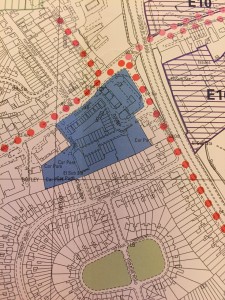I sent in my response today. You have until Friday to respond.
1. How does the SEP capture the main characteristics of the Oxfordshire economy, its challenges and opportunities?
I read this week that the workforce population is set to decline over the next decades.
The ambitious jobs growth projection seems to mean people living elsewhere will come to work in Oxfordshire. With roads at or over capacity, what plan are there to increase capacity?
The AONB and Green Belt are constraints on development.
I don’t think the SEP does enough to tackle or even recognize these two main constraints: roads and other infrastructure to support planned development, and an environmental sustainability aspect. I get that your focus is economic growth. But in a sustainable world, you need partners who look out for the environmental and social aspects of sustainability. I think that’s lacking in your plan and approach.
We have a problem here in Vale with home affordability. If we continue to attract low paying jobs (eg, warehouse, retail, services industries, other unskilled jobs) that don’t pay enough for people to be able to afford to live here, then we need to adapt housing policies to meet the needs of the workers.
2. People – are the right priorities and commitments included? If not, what is missing?
Young people and workers on average wages are being priced out. I don’t see anything in these plans to address this problem. IMO, this is the main challenge we face in the county.
If the working age population is declining, then presumably the other age brackets are growing (since population is forecast to grow). As people live longer and need places to live, what sort of growth strategy considers what’s needed for them? Could a plan for housing for older people contribute to growth and jobs here?
Should we consider whether some parts of Oxfordshire are full? Oxford City, for instance, is unable to meet its housing needs, yet continues to commit its available land to jobs growth. This short term focus on growth at all costs is guaranteeing longer-term problems with impassable roads, and ever-out-of-reach-to-theaverage-worker housing prices.
How will we educate our children when our population has doubled? Many families already cannot find a school place locally. This would seem to be a clear criteria for People.
3. Place – are the right priorities and commitments included? If not, what is missing?
I don’t see a priority to protecting what you’ve called our ‘key asset’, our natural environment.
As I said before, if your remit is to plan for sustainable growth, then it’s an ethical question that would be well answered by proactive partnering with residents and organisations that have views on environmental and social aspects of sustainability. For example, what if all development had a carbon-neutral requirement? Wouldn’t principles like that actually contribute to the world-leading reputation you aspire to?
It would be helpful (even if not mandatory) to have environmental assessments in place for the various bits of your plans. How else do you know about their viability?
4. Enterprise – are the right priorities and commitments included? If not, what is missing?
How will you measure jobs growth? Should there be a categorisation of jobs?
We may say we want jobs across the spectrum of pay grades, jobs for all skill levels and qualifications. But if we continue to create more low paying jobs, where will those workers live?
I think it serves the population well to promote balanced growth, as I’ve said before. If we do all we can to encourage young people to get training to quality them for jobs they’ll find personally and financially rewarding, and then provide those sorts of jobs, and homes they can rent or buy, we’ll have something to point to with pride.
Also as technology or other conditions make certain jobs obsolete, it would serve the population if we had a scheme that provided re-training to mature workers who need to change jobs.
5. Connectivity – are the right priorities and commitments included? If not, what is missing?
Our bus services are being cut back, and at the same time housing developments are planned for sites that allow more reliance on public transport. Our cycle tracks are below standard. Trains are SRO, and there’s no link between Wantage and Oxford. If we are serious about promoting non-car travel, we need higher priority for high-quality public transport.
With the planned growth in jobs and houses in the Wantage and Grove area, where’s the plan for a rail station there?
6. Does the SEP articulate clearly the roles and responsibilities of OxLEP?
As far as I can see, OxLEP is unaccountable to the people,. Without any way for the people whose lives and jobs are affected by what OxLEP decides to have any input into the decisions made, there’s bound to be strain. Meetings are private; the public have no role in the way it’s set up and led today.
As I said elsewhere, I think that since it was set up like this by government, it’s understandable.
But I feel there is a moral and ethical responsibility to be more inclusive, collaborative and accountable to better serve the residents of this county. Since that isn’t legislated, it has to come from the principles of the key players, or the ‘corporate culture’. In some sense, it’s even more important, simply from the fact that it’s not required but something to point to as ‘the way it should be done’.
25 May 2016



